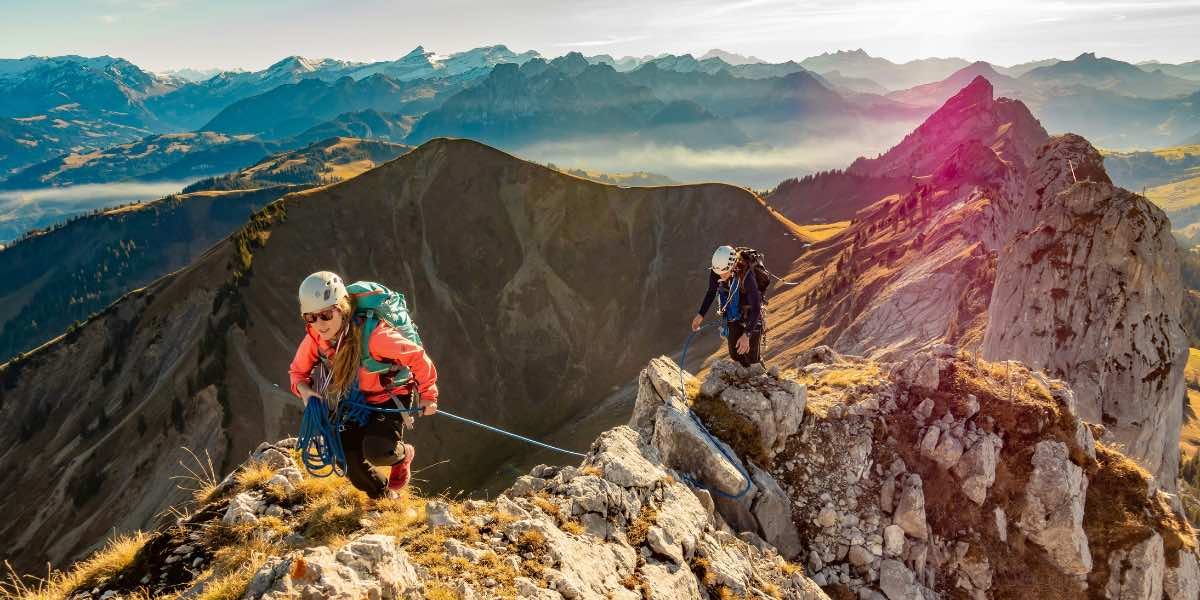Extreme escapes offer travelers the chance to engage in adventure sports that test endurance, skill, and adaptability in unfamiliar environments. From high-altitude jumps to deep-sea exploration, these experiences challenge conventional limits and provide a unique perspective on the natural world. While some activities demand extensive training, others are accessible with the right preparation and guidance.
Read also: Exploring Safe Destinations for Solo Female Travelers
How Does Skydiving Redefine the Idea of Freefall?
Skydiving remains a well-known extreme sport, yet its appeal varies depending on location, altitude, and conditions. Jumping from an aircraft at thousands of feet delivers an immediate adrenaline rush, followed by a controlled descent under a parachute. Locations with diverse landscapes, such as the Swiss Alps or coastal Australia, enhance the experience by providing expansive aerial views.
BASE jumping, a more advanced variation, involves leaping from fixed structures such as cliffs or bridges. Unlike skydiving, BASE jumps allow for only a few seconds of freefall before the parachute must deploy. Given the level of precision required, this activity is often pursued by those with significant skydiving experience.
What Factors Influence the Challenge of Whitewater Rafting?
Whitewater rafting combines teamwork, technical skill, and environmental awareness as participants navigate fast-moving rivers with varying levels of difficulty. Rapids are classified from I to VI, with higher numbers indicating stronger currents, larger waves, and greater risks. The Zambezi River, located near Victoria Falls, is known for its Class V rapids, where paddlers must respond quickly to shifting water patterns.
Multi-day rafting expeditions, such as those along the Colorado River through the Grand Canyon, introduce additional elements like camping and changing water levels. These trips require endurance and adaptability, as river conditions can shift due to weather or seasonal flow variations. Understanding river dynamics and safety protocols plays a key role in navigating these waters successfully.
Why Do Surfers Seek Out Some of the World’s Largest Waves?
Surfing large waves requires extensive skill, physical strength, and the ability to read ocean conditions accurately. Locations such as Nazaré, Portugal, and Peahi, Hawaii, produce swells that reach heights exceeding 50 feet under the right conditions. These waves are influenced by factors such as wind direction, ocean floor structure, and seasonal weather patterns.
Tow-in surfing, where jet skis assist surfers in reaching high-speed waves, has enabled riders to attempt increasingly challenging breaks. Unlike traditional surfing, this method allows individuals to access waves that might otherwise be unreachable by paddling alone. While these locations draw experienced athletes, smaller-scale waves provide opportunities for skill development before attempting extreme conditions.
What Challenges Does Deep-Sea Diving Present?
Scuba diving in deep or complex underwater environments requires specialized training and equipment. The Great Blue Hole in Belize, a marine sinkhole over 400 feet deep, attracts divers interested in exploring its geological formations. Descending into such environments introduces considerations like reduced visibility, temperature changes, and managing air consumption efficiently.
Cave diving presents additional challenges due to confined spaces and limited access to the surface. The cenotes of Mexico’s Yucatán Peninsula feature extensive underwater tunnels where divers navigate through submerged caverns. Proper planning and familiarity with specialized diving techniques are essential, as these environments differ significantly from open-water conditions.
How Do Snowboarders Adapt to Remote and Steep Terrain?
Snowboarding in backcountry locations offers an experience distinct from traditional ski resorts. Untouched slopes, deep powder, and unpredictable conditions require riders to develop skills in navigation, avalanche awareness, and terrain assessment. Locations such as the Chugach Mountains in Alaska provide access to challenging descents, often reached by helicopter.
Unlike groomed resort trails, backcountry terrain lacks marked routes and immediate assistance. Riders must evaluate factors such as snow stability, weather changes, and potential hazards before beginning a descent. Preparation and proper equipment, including avalanche transceivers and safety gear, contribute to a more informed approach to these conditions.
What Unique Experience Does Volcano Boarding Offer?
Descending the slopes of an active volcano on a modified board presents a distinctive approach to speed-based sports. Cerro Negro in Nicaragua, a young and active volcano, is a well-known site for this activity. The terrain consists of loose volcanic ash, which affects how riders control their descent.
Protective gear, including suits and goggles, helps mitigate exposure to debris. Unlike traditional snowboarding or sandboarding, the surface composition of volcanic ash creates different friction levels, requiring an adapted technique for maintaining balance and speed. The presence of geothermal activity in certain regions adds an additional layer of environmental awareness for participants.
How Does Wingsuit Flying Expand the Concept of Aerial Movement?
Wingsuit flying enables participants to experience sustained flight by gliding through the air in specially designed suits. The extended surface area of the suit allows for controlled movement rather than a direct freefall. Locations such as Lauterbrunnen Valley in Switzerland offer geographical features that enhance the visual and technical aspects of the sport.
Due to the precision required, wingsuit flying is typically pursued by individuals with significant skydiving experience. The proximity to terrain during flight introduces additional considerations, including wind conditions, navigation techniques, and exit strategy planning. Unlike skydiving, where altitude provides more time for adjustments, wingsuit flights involve close interactions with the surrounding landscape.
What Role Does Endurance Play in Extreme Adventure Races?
Endurance-based extreme sports test both physical limits and mental resilience. Ultra-marathons take place in environments ranging from deserts to arctic regions, each presenting distinct challenges. The Marathon des Sables, held in the Sahara, requires participants to manage hydration, heat exposure, and self-sufficiency over multiple days.
Mountaineering in high-altitude environments introduces additional physiological challenges. Expeditions to peaks such as Mount Everest involve gradual acclimatization to reduced oxygen levels. Unlike short-duration sports, endurance-based activities emphasize long-term preparation, energy conservation, and adaptability to shifting environmental conditions.
Read also: Staying Weather Updated When Traveling to Tropical Islands
What Motivates Travelers to Pursue Extreme Escapes?
Extreme escapes appeal to those seeking experiences that challenge conventional approaches to travel. Adventure sports provide opportunities for skill development, environmental awareness, and personal resilience. Whether navigating whitewater rapids, scaling remote mountains, or exploring underwater caves, these activities offer diverse ways to engage with unfamiliar landscapes.
While levels of difficulty vary, preparation, training, and risk awareness remain central to all extreme sports. As interest in adventure-based travel grows, more destinations continue to provide structured options for those looking to participate in these experiences.















